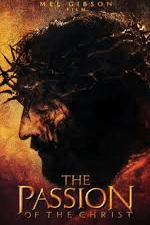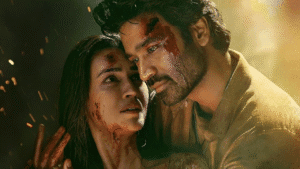After nearly two decades in development, Mel Gibson’s highly anticipated sequel to The Passion of the Christ is finally moving forward. The Resurrection of the Christ is set to begin filming in August 2025 at Rome’s famed Cinecittà Studios, with additional locations in Southern Italy. The film is expected to be one of the most ambitious faith-based projects in modern cinema history, exploring profound spiritual and supernatural themes beyond what was depicted in its predecessor.
A Bold and Ambitious Vision
Gibson has described The Resurrection of the Christ as an incredibly ambitious project that will delve deep into theological concepts. Unlike The Passion of the Christ, which focused solely on the final hours of Jesus’ life, this sequel aims to explore events ranging from the fall of the angels to the death of the last apostle. In a past interview, Gibson revealed that he intends to depict realms such as Sheol and hell, adding a unique and surreal aspect to the narrative.
He has also acknowledged the difficulty of tackling such a vast and complex story, stating that the film’s execution requires extensive planning and a fresh approach to biblical storytelling. Rather than offering a straightforward retelling of the resurrection, Gibson aims to present an immersive experience that highlights the spiritual battles between good and evil.
Jim Caviezel Returns as Jesus
Jim Caviezel is set to reprise his role as Jesus Christ, a character that earned him worldwide recognition when The Passion of the Christ was released. Given the 20-year gap since the first film’s release, Gibson has confirmed that CGI de-aging techniques will be used to maintain continuity. This is in line with Hollywood’s increasing use of digital technology to make actors appear younger, as seen in recent blockbusters.
The screenplay, which has been in development for nearly a decade, was co-written by Gibson, his brother Donal, and screenwriter Randall Wallace. Wallace, who previously collaborated with Gibson on Braveheart, is known for his ability to craft historical and emotional narratives. The writing process has reportedly been meticulous, with extensive research involving theologians and historians to ensure both historical and biblical accuracy.
The Legacy of The Passion of the Christ
 Released in 2004, The Passion of the Christ was a groundbreaking success, grossing $370 million in the U.S. and over $600 million worldwide. It remains one of the highest-grossing R-rated films of all time and is widely credited with opening the door for faith-based films in Hollywood. The movie’s unflinching depiction of Jesus’ suffering was both praised and criticized, sparking discussions on religious representation in cinema.
Released in 2004, The Passion of the Christ was a groundbreaking success, grossing $370 million in the U.S. and over $600 million worldwide. It remains one of the highest-grossing R-rated films of all time and is widely credited with opening the door for faith-based films in Hollywood. The movie’s unflinching depiction of Jesus’ suffering was both praised and criticized, sparking discussions on religious representation in cinema.
Despite its controversies, The Passion of the Christ continues to be one of the most influential Christian films ever made. Its impact led to the growth of a dedicated audience for faith-based storytelling, inspiring numerous filmmakers to explore religious themes in mainstream cinema. With The Resurrection of the Christ, Gibson aims to expand on the legacy of his original film, bringing audiences a story that is not only visually compelling but also deeply thought-provoking.
Production and Challenges
Cinecittà Studios’ CEO, Manuela Cacciamani, recently confirmed that the film will require multiple soundstages and large-scale set constructions. The studio, known for hosting some of the biggest historical and fantasy productions, is expected to play a crucial role in bringing Gibson’s vision to life. Production will also take place in various rural locations across Southern Italy to authentically recreate the biblical atmosphere.
Gibson has acknowledged that the film’s ambitious scope presents significant challenges. He has spoken about the complexity of portraying supernatural realms in a way that remains engaging and emotionally resonant without being overtly fantastical or artificial. The integration of visual effects, practical sets, and historically accurate locations will be key to achieving the film’s desired impact.
Another challenge lies in meeting audience expectations. Given the cultural and religious significance of the story, The Resurrection of the Christ is expected to attract both devoted followers of the original film and skeptics who are curious about Gibson’s interpretation of the resurrection. The filmmaker’s approach will likely determine whether the sequel matches or surpasses the success of The Passion of the Christ.
What to Expect
With Gibson at the helm and Caviezel returning to the role that defined his career, The Resurrection of the Christ is shaping up to be one of the most anticipated films of the coming years. The film is expected to blend historical drama with supernatural elements, providing audiences with a visually stunning and deeply emotional experience.
While no official release date has been announced, industry insiders speculate that the film could arrive in theaters in late 2026 or early 2027. Given the impact of its predecessor, The Resurrection of the Christ is likely to generate significant discussion and debate upon its release.
Stay tuned to Planet of Films for more updates on The Resurrection of the Christ and other major cinematic developments.
Read More:

























